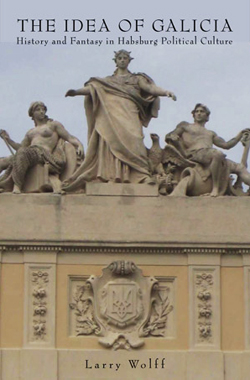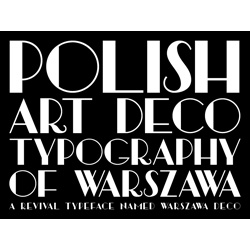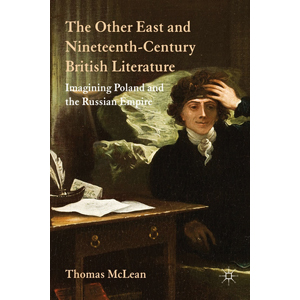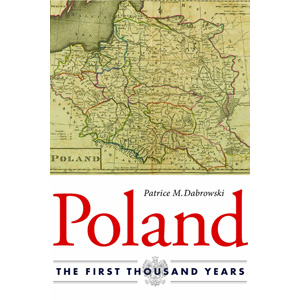 The Idea of Galicia: History and Fantasy in Habsburg Political Culture
The Idea of Galicia: History and Fantasy in Habsburg Political Culture
By Larry Wolff
Stanford University Press
2010
Larry Wolff’s The Idea of Galicia: History and Fantasy in Habsburg Political Culture is an extremely rich and engaging tale about Galicia – an invented geopolitical entity formed from the lands appropriated by the Austrian Empire in the first partition of Poland in 1772 (today’s Eastern Poland and Western Ukraine) and abolished with the abdication of the last Habsburg monarch in 1918 – but also, more importantly, about those who called it their home. In the century and a half of its turbulent existence this curious product of Habsburg imperial politics and Enlightenment rationality became a stage for ideological and cultural struggle between four ethnic groups – Austrian Germans, Poles, Ruthenians and Jews – all of whom tried to assign their own meaning to “the idea of Galicia.” In the processes of negotiating the status of this borderland territory, a new, heterogeneous identity was forged, that of a “Galician:” an identity that was quite distinct from national, ethnic or religious affiliations of Galicia’s population.
The book is divided into ten chapters, each covering a period in Galician history in which various political, ideological and cultural conceptions of Galicia were clashing and, in the process, giving a new shape to its multi-ethnic identity. The approach Wolff takes in The Idea of Galicia consists of interweaving traditional historical narratives of the most important events and political decisions that affected Galicia’s status with intellectual biographies of individuals who came to be recognized as cultural icons for a given generation and whose lives somehow reflect the large-scale changes that were taking place around them. The individual histories work like threads that guide the historical discourse and make it an even more engaging story – one with real characters. Thus, for instance, the grim realities of Galicia’s feudal relations in 1830s and 1840s are in the background of the childhood years of Leopold von Sacher-Masoch, the notorious author of Venus in Furs to whom masochism owes its name, whereas the anxieties and conflicts felt in the turn-of-the-century Galicia are framed in the discussion of Stanisław Wyspiański’s great drama Wesele (The Wedding).
The Idea of Galicia is organized chronologically. The book’s first chapter, “Inventing Galicia,” looks at the way in which the appropriation of Polish territories in 1772 was justified by rebranding it as “Halych,” a historic Ruthenian territory to which the Habsburg monarchy could lay claim. By discussing the letters and reports written by the first Austrian explorers of this new province, Wolff skillfully shows the importance of Galicia as the locus of the Habsburg Enlightened mission of civilizing “Eastern Europe” and the effects of this project on Galicia’s indigenous population, consisting of Poles, Ruthenians and Jews. Chapters 2 and 3 discuss the administrative politics of Austrian Empire towards its Galician “orient” in a post-Napoleonic era. The two cultural figures that serve as focal points for Wolff’s discussion are Alexander Fredro, the famous Polish playwright who belonged to the first generation of Poles born in Galicia (rather than the Republic of Poland), and the above-mentioned Sacher-Masoch, whose father was interestingly the chief of the Habsburg police in Galicia. The year 1846 is a fateful year in Galician history and is given a considerable attention in the book. In that year a Polish national uprising initiated in the free city of Cracow is rapidly quenched when peasants from areas around Tarnów rise to massacre Polish nobles and pillage their estates, supposedly out of loyalty to the Habsburg emperor. The trauma of this event will continue to have a deep impact on Galicia’s cultural dynamics throughout its existence. Chapter 5 deals with the aftermath of the failed revolution of 1848 and the ascension of Franz Joseph to the Habsburg throne. This is the time of the emergence of Czas (Time), the most influential Polish daily that will be instrumental in shaping the Galician politics of loyalism to the Habsburg monarchy, but also in securing Polish hegemony in the Galician cultural landscape. Chapter 6, aptly titled “The Average Galician in the Age of Autonomy,” discusses the ethnic and cultural variety of Galicia’s population by evoking multiple ways in which it was expressed and propagated: from exhibitions to encyclopedias and books of economic statistics. Also, as of 1867 Galicia officially became an autonomous territory after the transformation of the Austrian Empire into a dual Austro-Hungary and this date marks the beginning of Polish political dominance in Galicia. And so the discovery of Galician multiculturalism coincides with the onset of one culture’s hegemony: just one of many historical paradoxes and ironies that make Wolff’s story so interesting.
Fin de siècle was in European history a period of great anxieties and national tensions and Galicia was no exception in that regard. Chapter 7 that deals with this era is subtitled “Ghosts and Monsters,” and indeed, with the exception of the very founding of Galicia, there was no other period in which “fantasy” (understood here as mythical imagination) played such a major role in shaping both political and cultural struggles in the region. All of the apocalyptic and redemptive visions of Galicia produced in that time came to life during World War I. The period just before the war witnessed the acceleration of Polish-Ukrainian struggle over the ownership of Galician territories and administration. This fierce struggle erupted in bloody fights in Lviv right before the city was finally taken by the Polish army and incorporated, with the rest of the former Galician territory, into the re-established Republic of Poland in 1918. Even though Galicia ceased to exist after this date as a geopolitical entity, it continued its ephemeral existence throughout the twentieth century and Wolff, like a skilled storyteller that he is, ties all the loose ends of his story in the final chapter titled “Haunted Epilogue: Galicia after Galicia,” a chapter that once again highlights the incredibly wide scope of his research.
Wolff’s history of Galicia takes into account a truly impressive range of areas, from culture to economy and politics. Although there are chapters where certain perspectives are given more attention than others, one feels that none of the major ethnic groups in the Galician melting pot is neglected or misrepresented in this book. The multiple points of view represented in The Idea of Galicia make an extremely satisfying and comprehensive history of this “lost world,” one that allows for only a minor criticism. In seeking parallels and connections between individual biographies and historical processes Wolff occasionally over-interprets some of the quotes and facts to infuse them with symbolic significance, for instance by suggesting that Sader-Masoch’s perversions have their source in the dysfunctional feudal relationships he might have witnessed in Galicia as a child or by harping on Fredro’s side remark that he would prefer to be a Chinese Mandarin rather than a Pole in Galicia (an interesting remark but hardly the crux of Fredro’s sense of cultural identity). However, at no point does one feel that the author misreads or falsifies his material or that his conclusions are forced. Some of the connections he draws simply work better than others, which is understandable given the scope and ambition of Wolff’s work.
Despite these small issues, I will conclude by saying that reading The Idea of Galicia: History and Fantasy in Habsburg Political Culture is comparable to reading an engaging novel and that the learning experience it offers is greatly rewarding. I wholeheartedly recommend it and look forward to Larry Wolff’s next major project, if only to see if he can top this one.
CR




Excellent review. Must read this to clarify the complex origins of my late husband and to recommend to my grandchildren. (My website noted below is in progress)